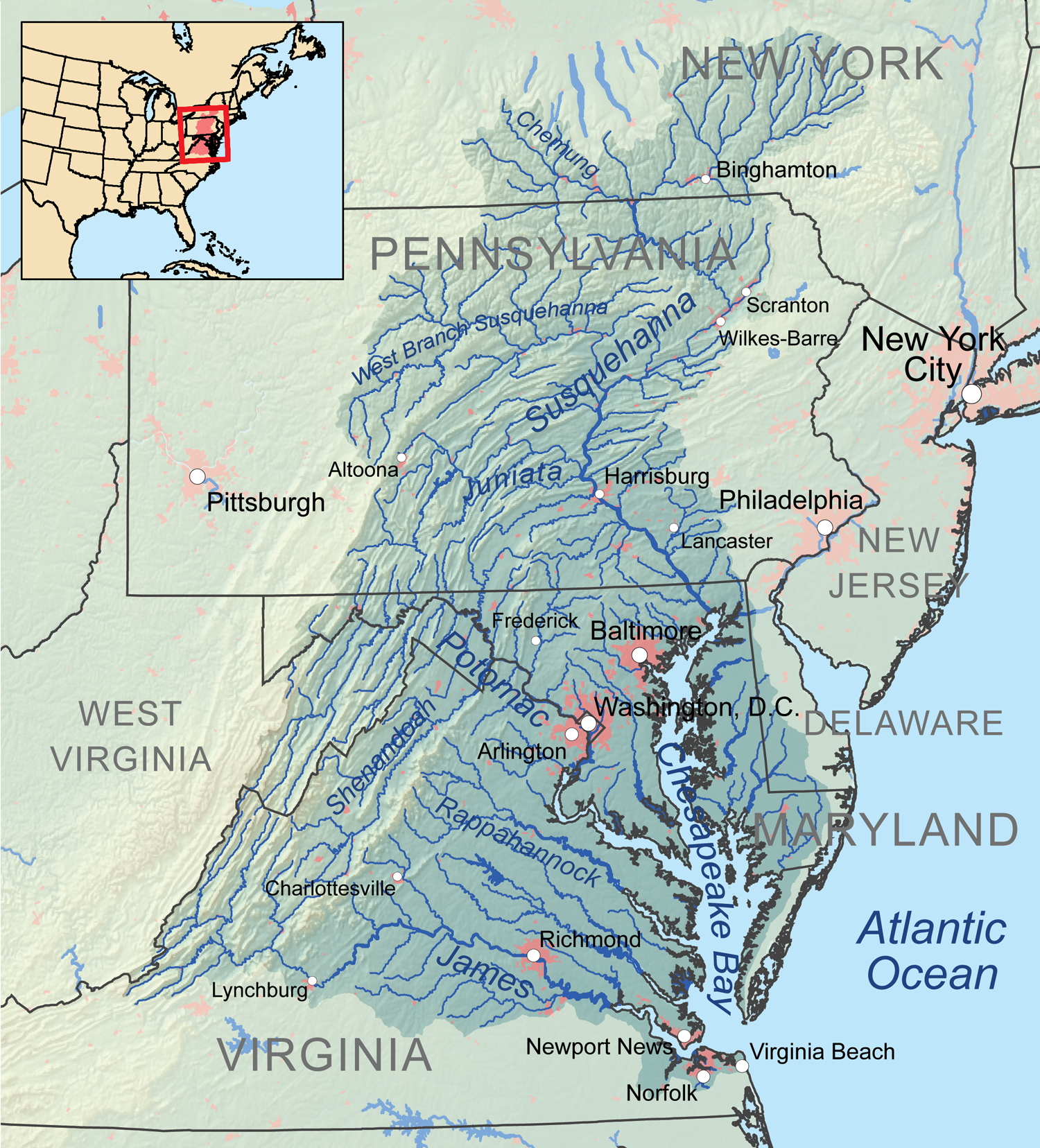Difference between revisions of "Multi-State Approaches to Environmental Restoration in the Chesapeake Bay and Water Diplomacy Framework Opportunities"
| [unchecked revision] | [unchecked revision] |
m (Saved using "Save and continue" button in form) |
m (Saved using "Save and continue" button in form) |
||
| Line 27: | Line 27: | ||
|Water Project= | |Water Project= | ||
|Agreement= | |Agreement= | ||
| + | |REP Framework=[[File:Chesapeakewatershedmap.png ]]Image 1. Map of the the Chesapeake Bay Watershed.<ref name = "https://en.wikipedia.org/wiki/Chesapeake_Bay"> | ||
|Topic Tags= | |Topic Tags= | ||
|External Links= | |External Links= | ||
Revision as of 22:33, 15 May 2017
{{Case Study |Water Use=Domestic/Urban Supply, Fisheries - wild, Livestock, Other Ecological Services, Recreation or Tourism |Land Use=agricultural- cropland and pasture, agricultural- confined livestock operations, urban, urban- high density |Climate=Humid mid-latitude (Köppen C-type); Continental (Köppen D-type) |Population=17 |Area=165759.24 |Geolocation=38.5733650426, -76.3703615963 |Issues= |Key Questions=
Transboundary Water Issues: What kinds of water treaties or agreements between countries can provide sufficient structure and stability to ensure enforceability but also be flexible and adaptable given future uncertainties?
no description entered
|Water Feature=Chesapeake Bay; Atlantic Ocean; Susquehanna River; Potomac River; James River;
|Riparian=The United States of America;
|Water Project=
|Agreement=
 Image 1. Map of the the Chesapeake Bay Watershed.[1]
Image 1. Map of the the Chesapeake Bay Watershed.[1]- ^
|Topic Tags=
|External Links=
|Case Review=
}}



